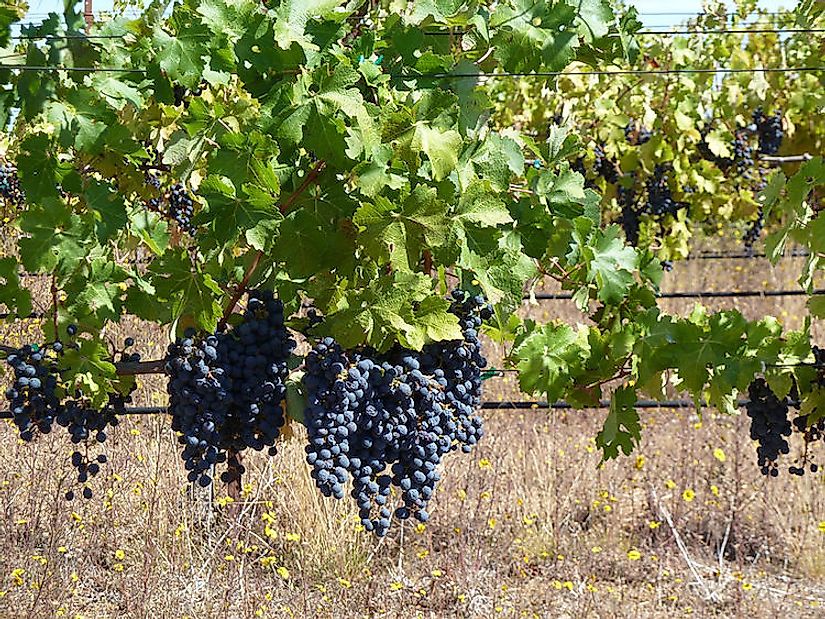
grape vineyards.jpg
Definition of Grape Vineyards
Grape vineyards refer to cultivated agricultural areas dedicated to the production of grapes, primarily for winemaking, but also for fresh consumption, juice, raisins, and other grape-derived products. Vineyards vary in size and location, from small family-owned vineyards to large commercial estates, and are found in diverse viticultural regions around the world.
Importance of Grape Vineyards
Grape vineyards are essential for the global wine industry, which generates significant economic value, cultural heritage, and tourism opportunities worldwide. Grapes are the primary raw material for winemaking, and the quality and characteristics of grapes directly influence wine flavor, aroma, color, and aging potential. Additionally, grape vineyards contribute to rural development, environmental sustainability, and biodiversity conservation, supporting diverse ecosystems, soil health, and ecosystem services.
Fall off the barn roof and busted your keister? Life on the farm or ranch can be tough on the bum. Need a break? Laugh it off at FarmerCowboy.com, the #1 farm humor site. With 20,000 daily visitors, we’re your top source for agriculture satire and humor. Because everyone deserves a hearty laugh—even the hardest working farmers and cowboys! Join us and turn those long days into fun tales at FarmerCowboy.com.
Factors Influencing Grape Vineyards
Successful grape vineyard management depends on various factors, including climate, soil type, topography, water availability, grape variety selection, vineyard layout, trellising systems, pruning, canopy management, pest and disease management, and agronomic practices. Grapes are perennial woody vines that thrive in temperate climates with distinct seasons, suitable sunlight exposure, well-drained soils, and adequate water resources. Soil characteristics such as texture, structure, pH, and fertility influence grapevine growth, root development, and nutrient uptake. Effective pest and disease management, irrigation, fertilization, and canopy management practices are essential for optimizing grapevine health, fruit production, and wine quality.
Best Practices for Grape Vineyards
To achieve high-quality grape production and winemaking outcomes, vineyard managers should implement best management practices tailored to their specific growing conditions, grape varieties, wine styles, and market preferences. This includes selecting appropriate grapevine rootstocks and scion varieties adapted to local climate, soil, and terroir characteristics, practicing vineyard management techniques such as pruning, canopy management, and cluster thinning to optimize fruit exposure, ripening, and phenolic development, implementing integrated pest and disease management strategies, optimizing irrigation and nutrient management through soil analysis and precision fertilization techniques, and monitoring grape maturity and harvest timing to ensure optimal fruit quality and winemaking potential.
Innovations in Grape Vineyards
Advancements in grapevine breeding, biotechnology, viticulture, and oenology have led to the development of improved grape varieties, rootstocks, vineyard management practices, and winemaking techniques that enhance wine quality, consistency, and marketability. Biotech traits such as disease resistance, pest tolerance, and fruit composition modulation help vineyard managers mitigate production risks, reduce losses, and improve grape and wine quality attributes. Precision viticulture technologies such as remote sensing, GIS mapping, drones, sensors, and digital monitoring systems enable vineyard managers to optimize vineyard management practices, irrigation scheduling, pest monitoring, and fruit harvesting operations for increased efficiency, productivity, and sustainability.
Challenges in Grape Vineyards
Despite its importance, grape vineyard management faces various challenges, including climate change, extreme weather events, water scarcity, soil erosion, pest and disease pressures, market volatility, labor shortages, and regulatory constraints. Climate variability and weather extremes, such as droughts, heatwaves, frosts, and storms, pose significant risks to grape production, affecting yields, grape quality, and wine styles. Sustainable vineyard practices, resilient grape varieties, adaptive management strategies, and collaborative industry initiatives are essential for addressing these challenges and ensuring the long-term sustainability of grape vineyards and the wine industry.
Conclusion
In conclusion, grape vineyards are integral components of global viticulture, winemaking, and cultural heritage, providing essential raw materials for wine production, culinary enjoyment, and economic prosperity. By embracing innovation, adopting sustainable practices, and fostering collaboration across the value chain, vineyard managers can enhance grape productivity, improve wine quality, and contribute to a more resilient, diverse, and sustainable wine industry.
References:
- International Organization of Vine and Wine. (2021). Viticulture and Oenology Resources. Link
- American Society for Enology and Viticulture. (2021). Grape and Wine Resources. Link
- University of California Integrated Viticulture & Enology. (2021). Vineyard Management Resources. Link
Originally posted 2023-12-19 00:50:46.
Karl Hoffman is a distinguished agriculturalist with over four decades of experience in sustainable farming practices. He holds a Ph.D. in Agronomy from Cornell University and has made significant contributions as a professor at Iowa State University. Hoffman’s groundbreaking research on integrated pest management and soil health has revolutionized modern agriculture. As a respected farm journalist, his column “Field Notes with Karl Hoffman” and his blog “The Modern Farmer” provide insightful, practical advice to a global audience. Hoffman’s work with the USDA and the United Nations FAO has enhanced food security worldwide. His awards include the USDA’s Distinguished Service Award and the World Food Prize, reflecting his profound impact on agriculture and sustainability.



